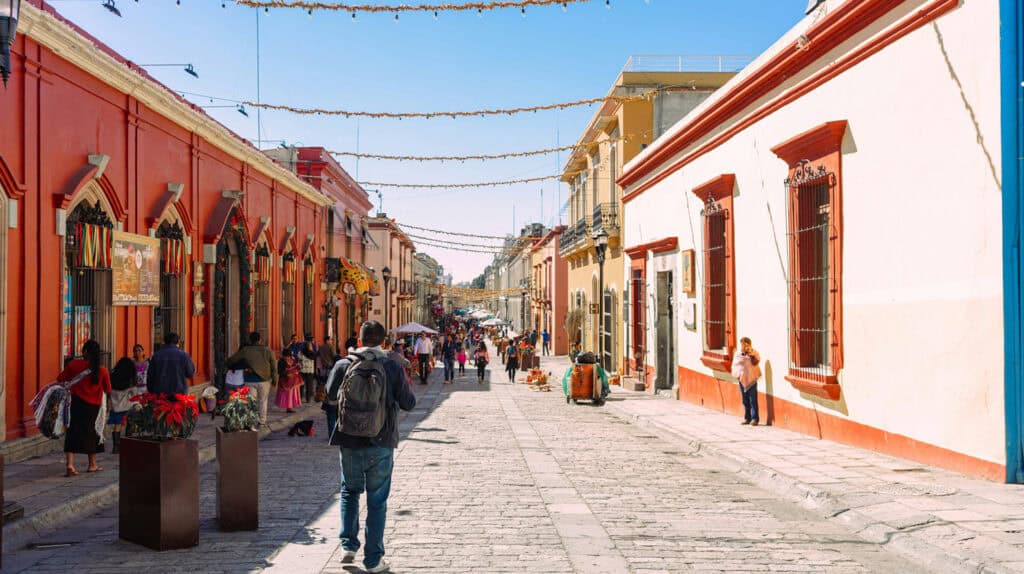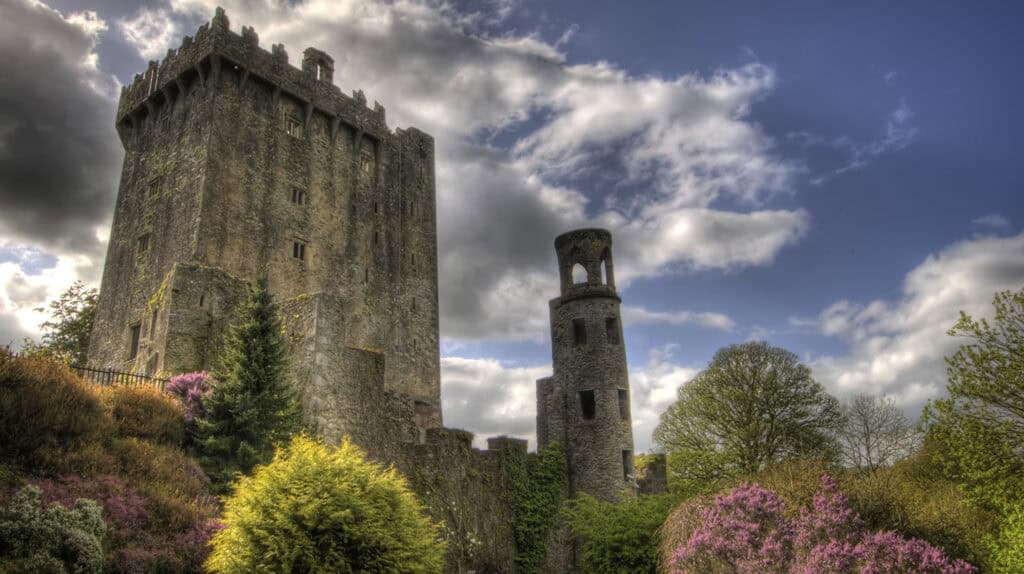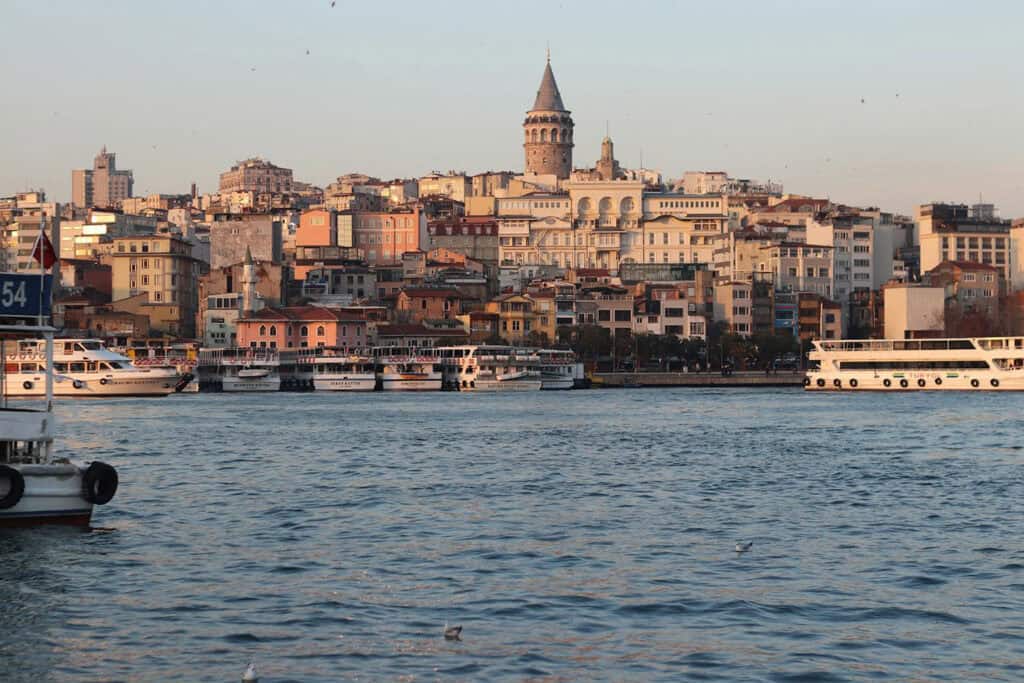
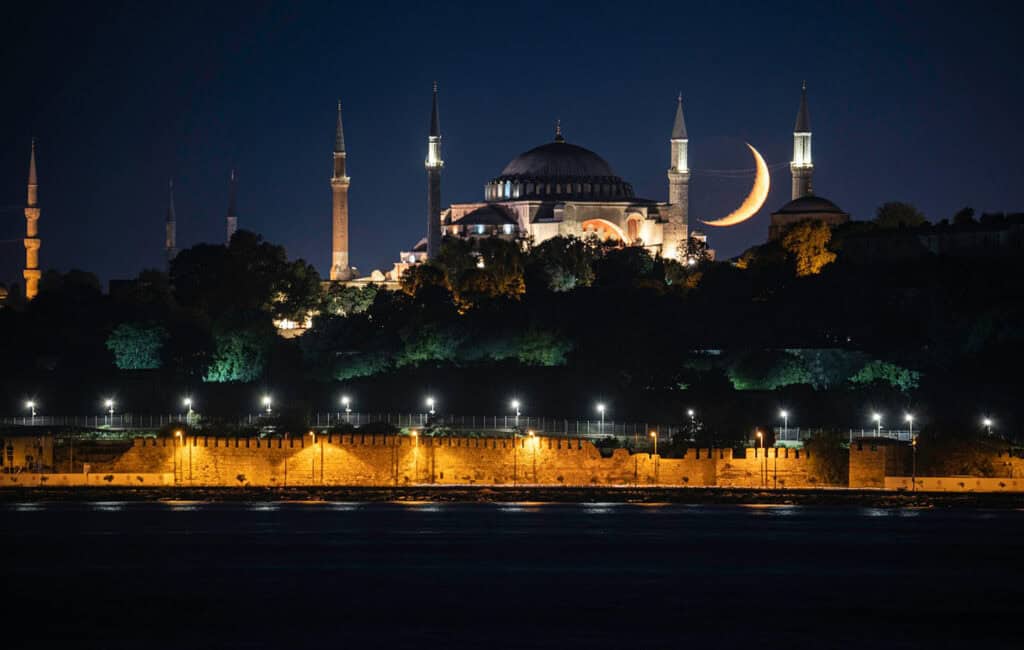

Ready to discover Turkey’s hidden gems and architectural marvels? This beautiful country is home to famous landmarks and diverse architectural styles, from Ottoman mosques to ancient Roman theaters.
Whether you’re exploring famous Turkey landmarks or lesser-known spots, Turkey’s rich history and stunning architecture will captivate you.
As a traveler, you’ll experience various architectural building types and uncover the beauty of sites like Hagia Sophia, Topkapi Palace, and Pamukkale’s terraces. Turkey is full of treasures waiting for you to explore.
At Landmarks Architects, we specialize in guiding you to Turkey’s most iconic landmarks and hidden gems.
In this article, we’ll cover:
- The most famous Turkey landmarks
- Types of architectural styles across the country
- The must-see architectural wonders and natural beauty
Ready to explore Turkey? Keep reading to uncover the architectural gems that make this country so unique.
Top 3 Most Famous Turkey Landmarks
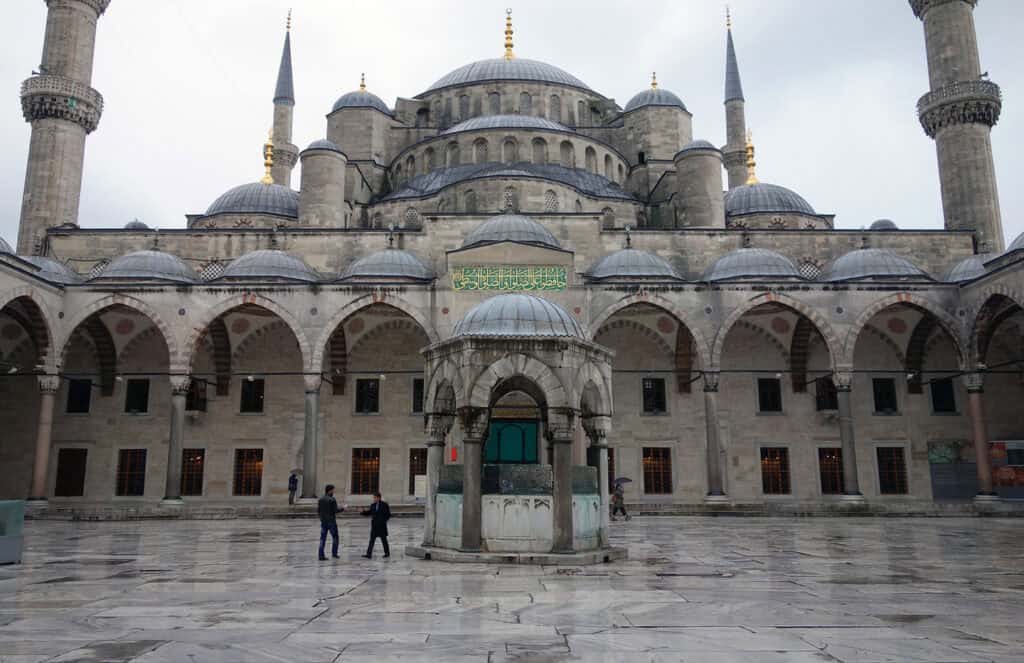
1. Hagia Sophia
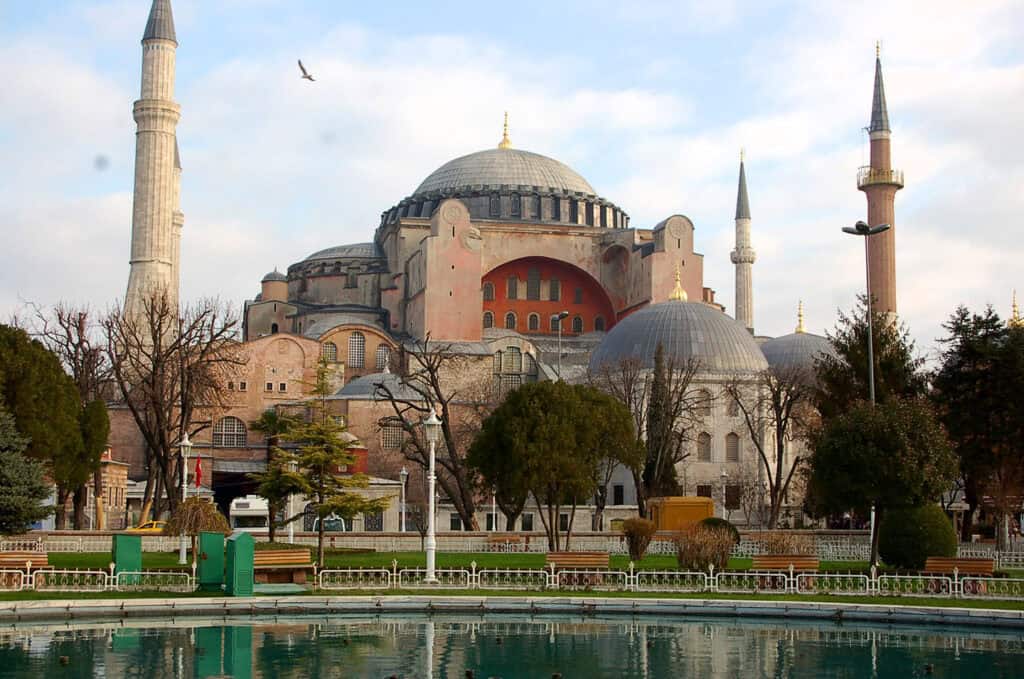
Hagia Sophia, located in Istanbul, Turkey, is a historic landmark renowned for its breathtaking Byzantine architecture. It holds significant cultural importance and is listed as a UNESCO World Heritage Site.
Originally built as a church during the Byzantine era, it later became a mosque under the Ottoman Empire. This transformation reflects the diverse history of the Byzantine and Ottoman empires.
The structure is an architectural marvel, famous for its massive central dome and intricate mosaics that reflect both Christian and Islamic artistic traditions. It attracts millions of visitors each year who come to admire its beauty in Sultanahmet Square.
Hagia Sophia is a key part of the UNESCO World Heritage List and symbolizes the rich historical tapestry of Turkey. Its blend of Christian and Islamic elements represents the amazing specialty of this important landmark. Visitors appreciate both its artistic features and its role as a place of worship.
2. Blue Mosque

The Blue Mosque, officially known as the Sultan Ahmed Mosque, is a significant landmark in Istanbul, Turkey. Constructed during the Ottoman Empire, it showcases stunning Ottoman architecture.
Visitors are often captivated by its blue tiles, which adorn the mosque’s interior. This feature gives the mosque its popular name.
Located near Sultanahmet Square, it attracts millions of tourists each year. As a functioning mosque, it is also a place of worship. The mosque’s grand dome and six minarets highlight its architectural beauty.
Those exploring famous Turkish landmarks cannot miss the Blue Mosque. Its historical significance and stunning design make it an iconic landmark in Istanbul.
3. Topkapi Palace

Topkapi Palace in Istanbul, Turkey, is a significant landmark and one of the most famous Turkey landmarks.
Once the residence of Ottoman sultans and the empire’s administrative center, it showcases Ottoman architecture, blending Islamic, Byzantine, and Turkish styles with Iznik tiles, domes, and arched colonnades.
The palace’s courtyards, lush gardens, and pavilions, like the Baghdad Pavilion, highlight its grandeur, while the Harem and Treasury house exquisite artifacts such as the Topkapi Dagger and sacred relics.
Converted into a museum in 1924, it offers a glimpse into the rich history and culture of the Ottoman Empire, making it a must-visit destination.
Historical Landmarks

See Also Iranian Architecture: Exploring 7 Outstanding Works
4. Ephesus Ancient City
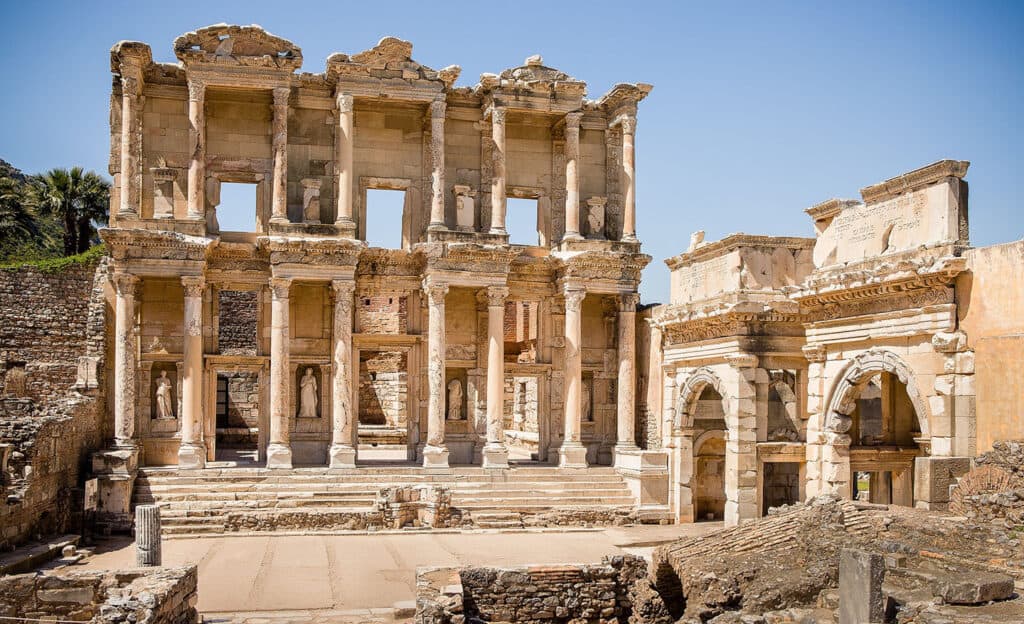
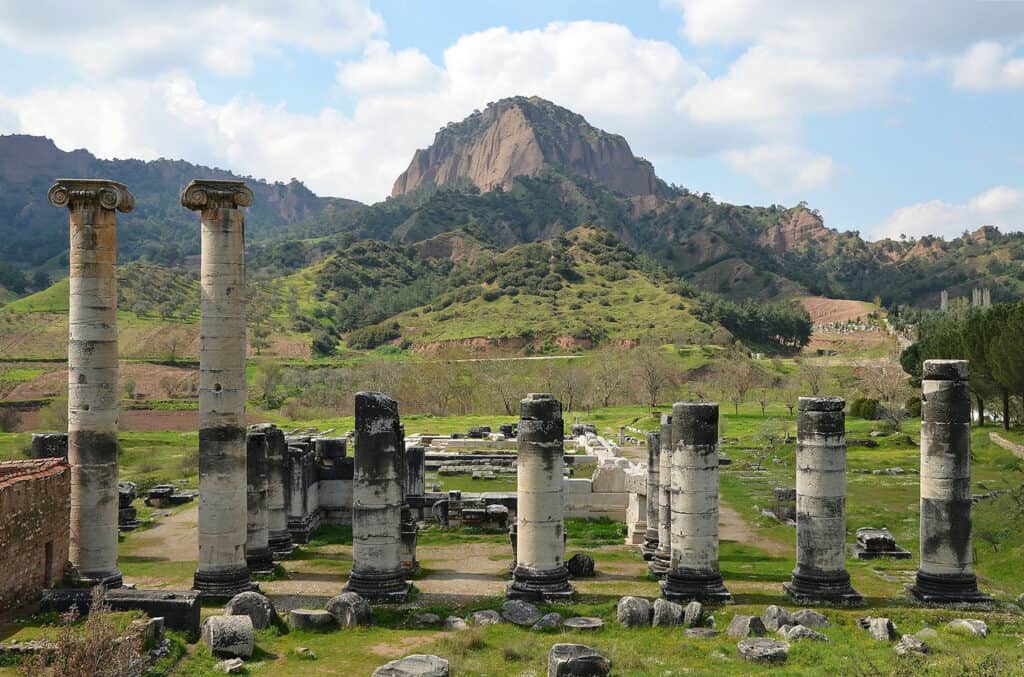
Ephesus is a notable ancient city located in Southwest Turkey. It is famous for its well-preserved ancient ruins, which reflect its historical significance during Hellenistic and Roman times. This site is recognized as a UNESCO World Heritage Site.
Among its landmarks, the Library of Celsus stands out as an architectural marvel. It housed thousands of scrolls and served as a cultural center. Another important site is the Temple of Artemis, one of the Seven Wonders of the Ancient World, dedicated to the goddess of fertility, the hunt, and the moon.
Visitors to Ephesus encounter many ancient tombs and structures that showcase the city’s rich history. It thrived under the Roman Empire, becoming a major center for trade, culture, and religion. Ephesus is a key part of Turkey’s collection of famous architectural landmarks, drawing history enthusiasts from around the globe.
5. Basilica Cistern
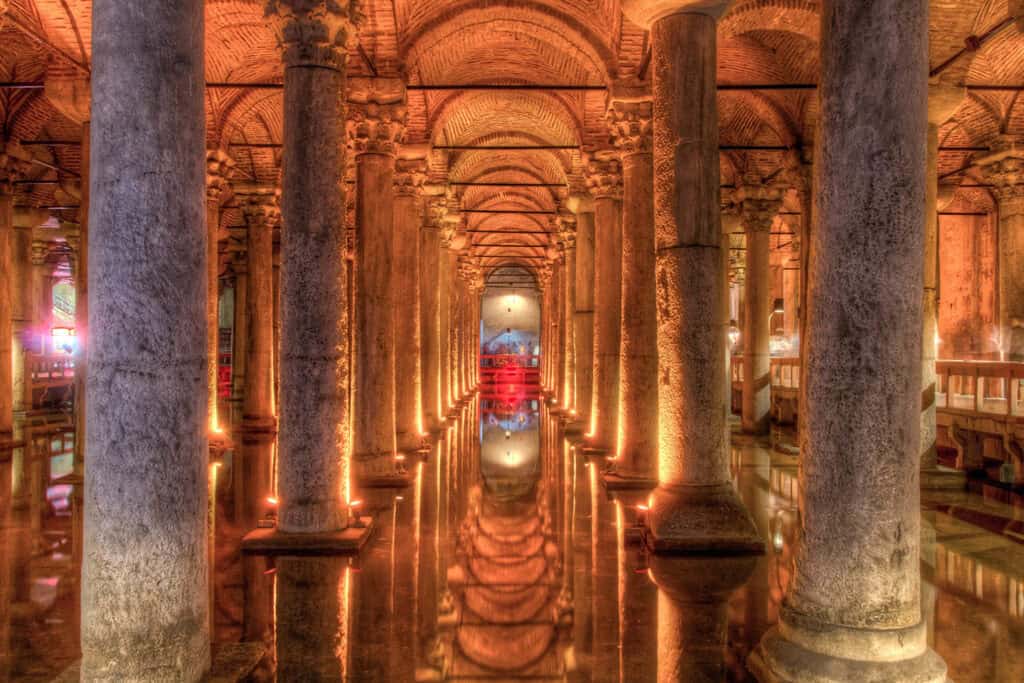
The Basilica Cistern is an ancient landmark located in the Sultanahmet Square of Istanbul. This ancient underground marvel was built during the Byzantine Empire around 532 AD to store water. It reflects the engineering brilliance of its time.
Visitors can explore this hidden treasure, which measures about 453 feet long and 213 feet wide. The cistern once held up to 80,000 cubic meters of water, providing for the Great Palace and the surrounding area.
As one of the largest underground cities in Istanbul, it features stunning columns and atmospheric lighting. Its historical significance attracts many tourists each year, making it a key stop for anyone interested in Istanbul’s rich past.
The Basilica Cistern remains a testament to the ingenuity of ancient civilizations. Each visit offers a unique glimpse into the history of the Byzantine Empire and its remarkable architectural accomplishments.
6. Galata Tower

Galata Tower is an iconic landmark in Istanbul, Turkey. Built-in 1348 during the reign of the Genoese, it offers a remarkable view of the city. The tower originally served as a Genoese observation tower and later functioned as a fire watchtower and prison.
Its historical significance makes it a key symbol of the city and a popular tourist attraction.
Standing at 62.59 m, the Galata Tower is cylindrical and made of stone. It boasts a distinctive medieval design and has been an iconic feature of Istanbul’s skyline for centuries.
Visitors can access an observation deck at the top. From there, they can see stunning views of the Bosphorus, the Hagia Sophia, and the Blue Mosque. It attracts many for its beauty and historical importance.
Tourists can explore exhibitions inside the tower, learning more about its role throughout history. Galata Tower remains a must-see for anyone exploring Istanbul’s rich heritage.
7. Aspendos Theatre
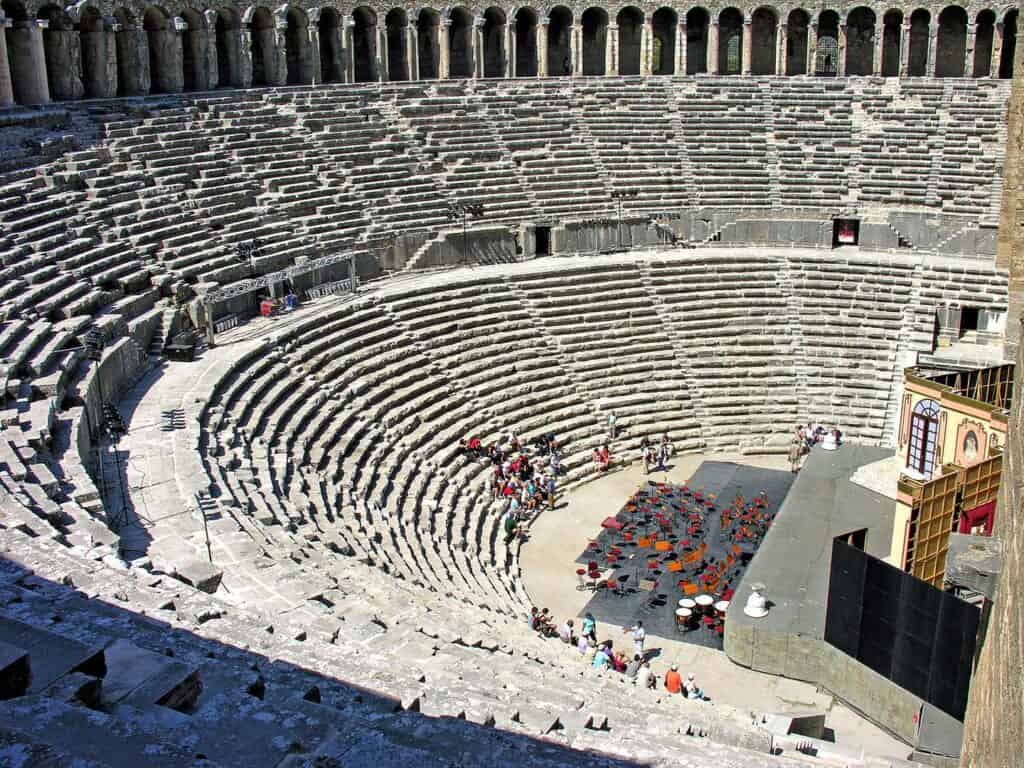
Aspendos Theatre is one of the most important landmarks in Turkey. Located near Antalya, it dates back to the Roman period and is renowned for its well-preserved structure.
This ancient theater can seat up to 15,000 people and boasts remarkable acoustics. Built-in 155 AD, it exemplifies the architectural brilliance of Roman engineering.
Visitors admire its grand design and cultural significance. Aspendos is a key example of ancient ruins that have withstood the test of time. Today, it serves as a popular venue for performances, attracting both locals and tourists. Aspendos stands as a symbol of Turkey’s rich history and heritage.
See Also Famous Architecture in Asia: Top 13 Iconic Landmarks
8. Dolmabahçe Palace
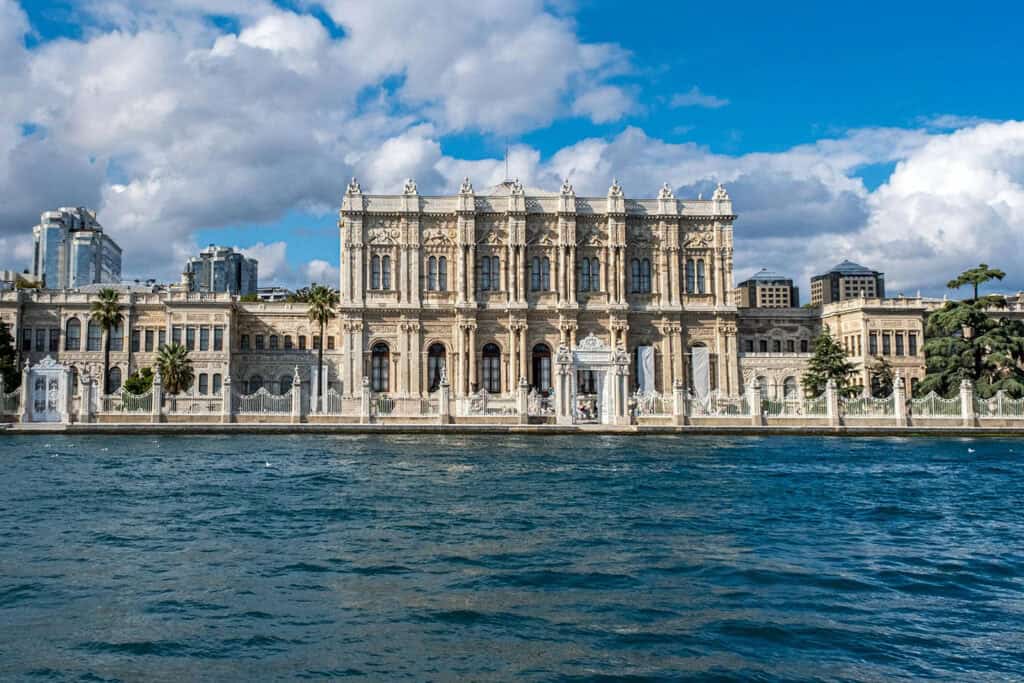
Dolmabahçe Palace is a significant landmark in Istanbul, Turkey. It served as the official residence of the last six sultans of the Ottoman Empire. The palace showcases stunning architectural beauty, blending Baroque, Rococo, and Neoclassical styles. Its construction was completed in 1856, covering an area of 45,000 m².
Dolmabahçe consists of 285 rooms, 46 halls, and beautiful gardens along the Bosporus. The lavish design and rich history make it a must-visit site for tourists.
Visitors can explore its grand interiors and experience the opulence that characterizes this famous landmark. The intricate details reflect the grandeur of the Ottoman Empire and its cultural heritage.
9. Sumela Monastery
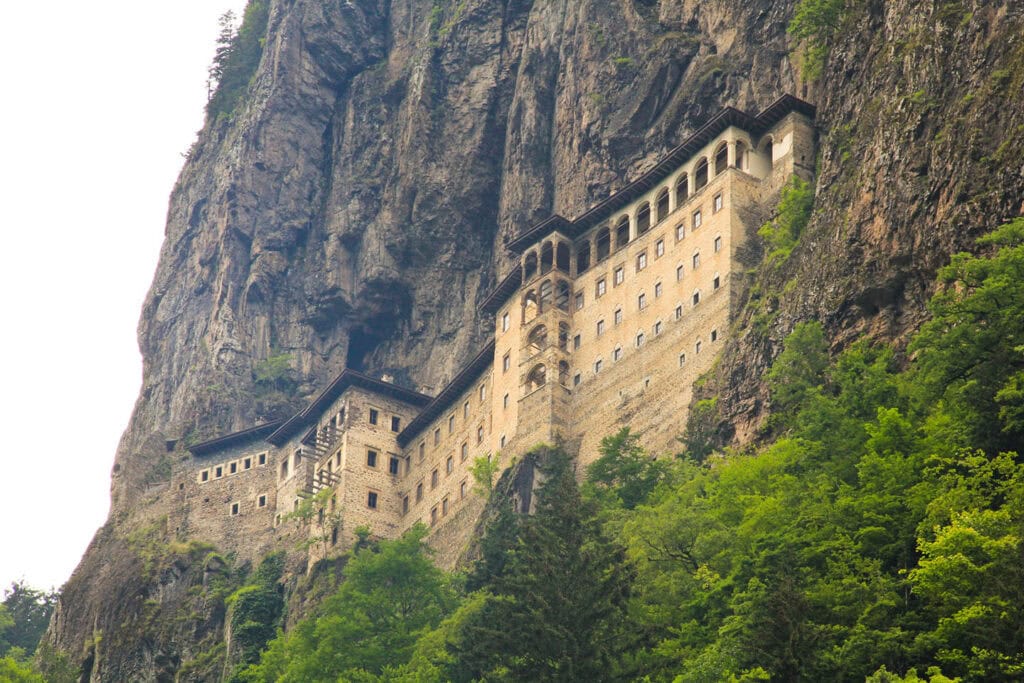
Sumela Monastery is one of the most remarkable historical landmarks in Turkey. Nestled in the lush Pontic Mountains of Eastern Turkey, it offers stunning views and a glimpse into the region’s rich past.
This monastic site was built in the 4th century during the Byzantine Empire. Dedicated to the Virgin Mary, Sumela is considered an ancient marvel and a testament to Byzantine architecture.
Visitors often describe it as a hidden gem. The monastery is perched on a cliff, approximately 1,200 meters above a river valley. Its frescoes and unique structure attract tourists and pilgrims alike. Sumela Monastery remains an important symbol of the religious and cultural history of the area.
Natural Landmarks

See Also Famous Architecture in Europe: Top 15 Iconic Landmarks
10. Pamukkale’s Terraces

Pamukkale, known as the “Cotton Castle,” is a stunning natural wonder in southwestern Turkey. This UNESCO World Heritage Site features unique travertine terraces formed by mineral-rich hot springs. The white formations resemble cascading cotton and attract many visitors.
The travertine terraces provide therapeutic waters believed to have health benefits. Travelers often soak in these hot springs, enjoying their calming effects. Each terrace creates beautiful pools, making it a favorite spot for nature lovers and photographers.
Nearby, the ancient city of Hierapolis adds historical significance to the site. Visitors can explore Roman ruins while enjoying the striking landscape. Pamukkale stands out among the famous landmarks in Turkey for its stunning natural beauty and rich history.
11. Cappadocia

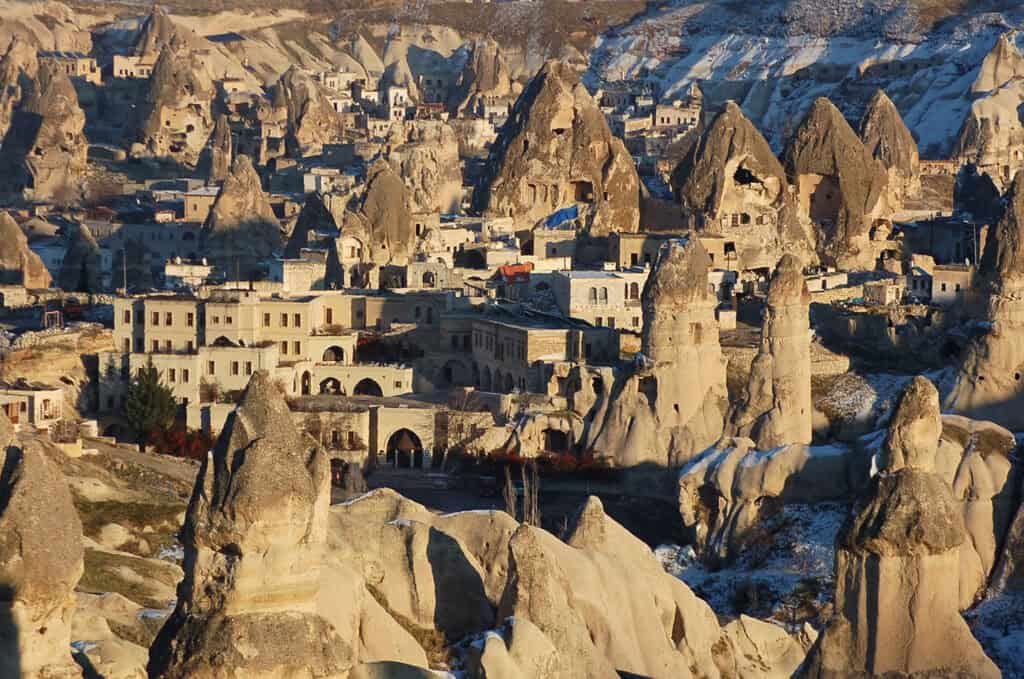
Cappadocia is known for its unique geological formations, including the famous Fairy Chimneys. These tall, thin spires are created from soft volcanic rock and offer stunning views. Visitors can explore underground cities, and remnants of ancient civilizations, hidden beneath the ground.
These ancient marvels reflect the region’s rich history. Göreme National Park is a UNESCO World Heritage Site, featuring rock-cut churches and monasteries. This area attracts nature lovers and history enthusiasts alike.
Cappadocia’s landscape is a blend of natural beauty and human creativity, making it one of the most famous landmarks in Turkey.
See Also Famous Architecture in Italy: 22 Iconic Buildings You Must See
Famous Turkey Landmarks: A Recap
Famous Turkey landmarks are a mix of ancient history, beautiful architecture, and natural wonders. Turkey’s rich past is seen in landmarks like the Hagia Sophia and Topkapi Palace.
The Grand Bazaar in Istanbul is one of the oldest and largest markets in the world, showing off Turkish culture and trade.
Whether you visit ancient landmarks like Ephesus or the stunning terraces of Pamukkale, each place tells a unique story of Turkey’s history. These sites, from Ottoman mosques to Roman theaters, give a fascinating look into the country’s diverse heritage.





